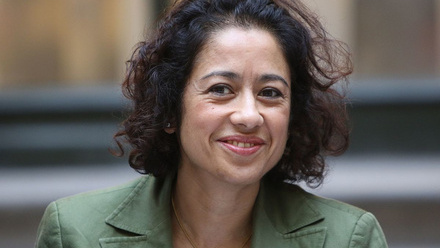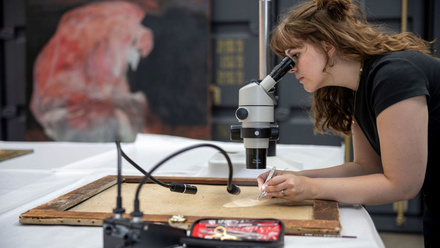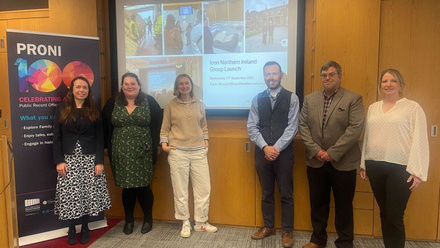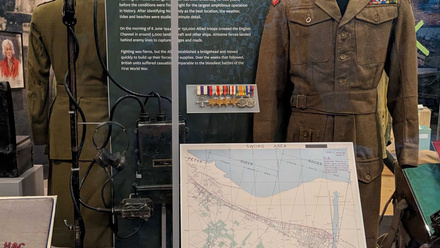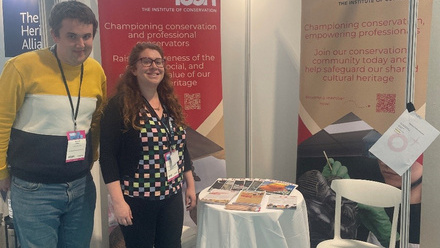Conservation Stations are being set up across the country for Heritage Open Days, where the public will be able to learn about the important work conservators do.
SPOTLIGHT
Conservation Station at Rotunda Museum, Scarborough
Rotunda Museum , Vernon Road, Scarborough , North Yorkshire, YO11 2PS
Friday 8 September: Tour: 1000-1100, 1200-1300 & 1400-1500
Come along and join Andrew Clay, Chief Executive of Scarborough Museum and Galleries and Managing Director Adam Hickey from Pinnacle Conservation at the stunning Rotunda Museum in Scarborough, one of the oldest purpose-built museums still in use.
Visit one of the UK’s oldest purpose-built museums in the UK, for an insight into the history of the museum and the world of heritage Conservation.
Included in the event will be interactive sessions including an opportunity for visitors to have a go at creating their own Mason Marks with help from a qualified Stonemason, and Hot Lime and Decorative Art Demonstrations from conservation specialist and Icon Pathway Member Valerio Caputi.
The session will end with free access to the museum full of history and the remarkable 11,000-year-old artefacts from the Star Carr Collection. The interior showcases a fascinating Georgian gallery, featuring a frieze showing the geology of the local coastline. The original cases tell the history of the museum, and they explore the stories of the nineteenth century Scarborough Philosophical Society which brought the collections together.
Find out more and book here.
Icon member Valerio Caputi will run a conservation session on the day:
I will be demonstrating stone conservation techniques such as limewash and shelter coating. I will show how to mix lime mortar for the repairs of decayed stonework and the application of protective coating using traditional materials.
The aim is to raise awareness of the importance of the use of traditional materials and techniques in the conservation of the stone fabric of the Rotunda Museum.
I will also show the importance of visual and chemical analysis of the historic mortar to aid the design of an effective conservation mortar mix.
I am the Lead conservator for Pinnacle Conservation Ltd and I supervise and offer technical advice to our great team of conservators and heritage specialist. After studying and practising conservation in Rome, I have moved to the UK to improve my English and pursue a career in conservation.
I have found a great team of Heritage Professionals at Pinnacle Conservation and worked with them till now. I am also currently enrolled in the MA Heritage Conservator Apprenticeship Level 7. This is a great opportunity to gain knowledge and skills to further develop as conservator and was made possible thanks to the collaborative support of my company Pinnacle Conservation, the University of Lincoln and Icon.
I have always enjoyed working within the built heritage with the mission of preserve it for the future generations. I love the fact that the places where we work are unique such as Castle Howard and Wentworth Wood House to name some, and, we have the lifetime opportunity to access part of this building where people have not been for a long time.
Finally, I truly enjoy engaging with the public promoting hard hat tours and with other building professionals such as stone masons or joiners sharing and learning via a collaborative approach which I believe is the key to enhance the protection and upkeeping of our built heritage.
Why should people come visit you for Heritage Open Days?
Pinnacle Conservation is driven by the passion to protect and preserve architectural heritage and use this to educate and promote the skills and importance of conservation.
The Open day will enable people to have the opportunity to hear and learn from experts in historical conservation, consultation, and construction, learning about the techniques required ranging from state of the art, innovative and age-old and traditionally learned masonry skills.
What’s interesting about the site?
The Rotunda Museum is one of the oldest purpose-built museums still in use in the UK. The curved grade II* listed building was originally constructed in 1829 as one of the country’s first purpose-built museums.
Originally built in 1829 BY Richard Hey Sharp of York, to a design by William Smith, the “Father of English Geology”.
Visitors will be able to see the external stonework being sensitively restored along with the delicate practice of Lime Wash to help preserve the building for future generations, with the team talking through the process.
Meet Pinnacle Conservation during Heritage Open Days at Rotunda Museum.


